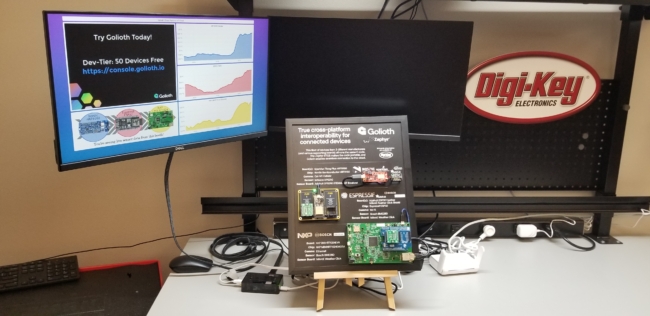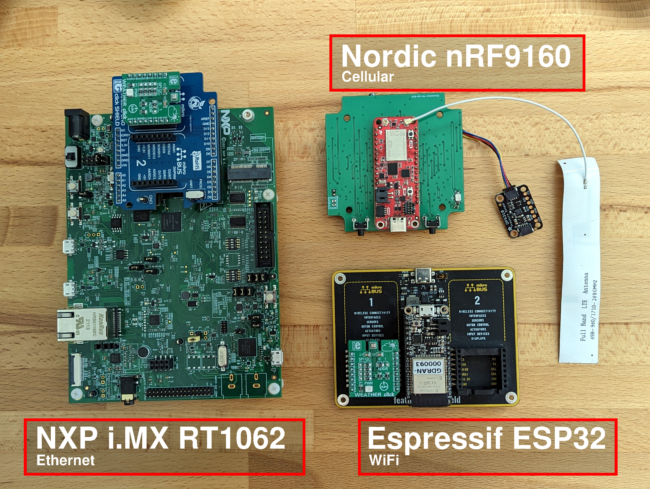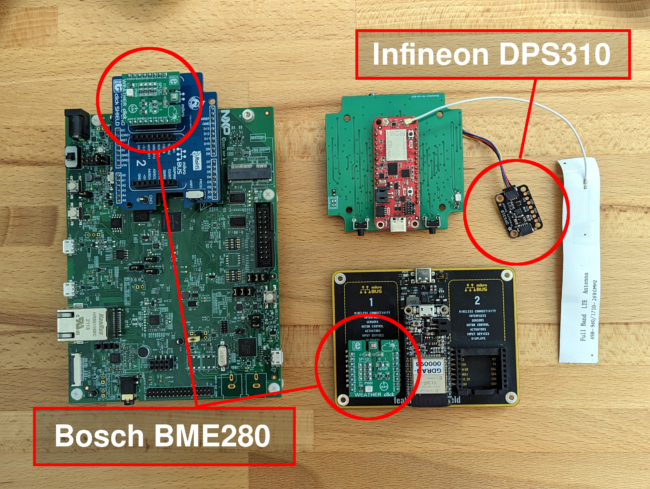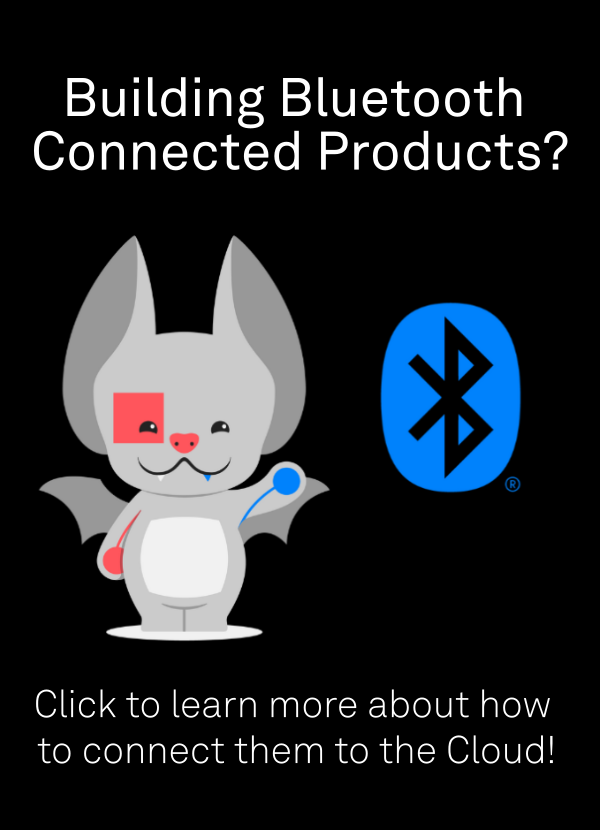Our friends at DigiKey invited us to exhibit a hardware demo at the DigiKey booth during Sensors Converge 2023. The conference takes place in Santa Clara, California on June 20-22. Come see our demo at booth #616.
What kind of hardware makes the most sense at a DigiKey booth? All of the hardware, of course!
We’ve built a demo that shows off a fleet of three temperature sensors, all of them using microcontrollers from different manufactures, three different types of connectivity, and sensors from two different companies. Oh, did I mention that all of it runs the same C code? Readings are sent back to Golioth on a regular basis, and settings (like how often those readings occur) are configurable from the cloud. It’s shocking to think connectivity and cross-platform deployments could be this easy. But that’s what we do here at Golioth, and the Zephyr RTOS makes pretty easy.
Hardware and Firmware
The image above is what we pitched. It shows devices from Nordic, NXP, and Espressif connecting to Golioth using Cellular, Ethernet, and WiFi. They are all supported by Zephyr so adding them to the firmware project is a matter of generating one overlay file and one configuration file for each board.
You can take a look at the code in our iot_weather_fleet sample repository. All device-specific information is in the boards directory, everything else is abstracted to work with any Zephyr supported hardware (even swapping out sensors without changing the code).
Speaking of sensors, we used two different types: a Bosch BME280 and an Infineon DPS310. These both have driver support built into Zephyr. You just add your sensor to a Devicetree overlay file for the board, assign it an alias, and the RTOS does the rest. It’s truly remarkable!
Talk: Modular Hardware with Golioth and Zephyr
The concept for all of this came from a conference talk I gave earlier this year at the Embedded Online Conference. Most IoT devices are performing simple work, like sending back sensor readings. But of course the hardware design and firmware development take a lot of time and testing to get right. It should be possible to make hardware changes without rewriting the codebase when adding those changes to the firmware. And it is! We just need to embrace the concept and use it by default.
Design for the Embedded Future
The future is low power, and the future is most certainly connected. Golioth has those values at our core, making it simple to connect, control, and gather data from microcontroller-based devices en masse.

With our Dev Tier you can connect up to 50 devices for free, so give Golioth a try today. We’d love to hear what you’re building–start a thread on the Golioth Forum to show off your work. If you have questions about how your fleet will perform with Golioth, please reach out to the Developer Relations Team and set up call.
We hope you’ll stop by the DigiKey booth this month. Here’s a sneak peek of what you’ll see!




No comments yet! Start the discussion at forum.golioth.io